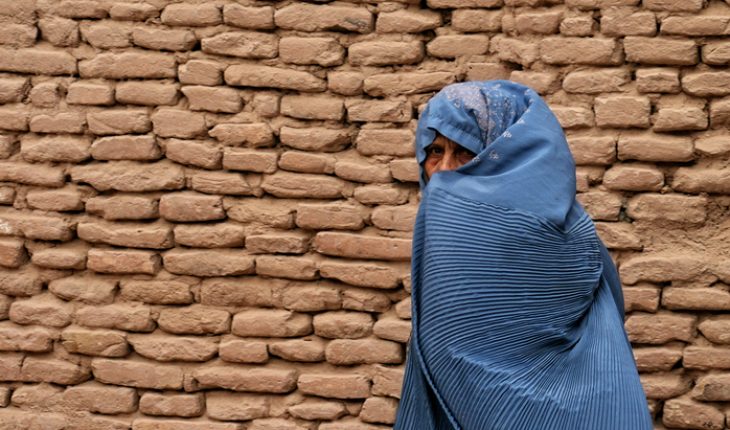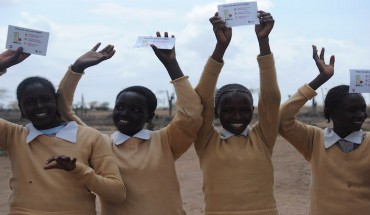Handing (Back) Over the Pen: Afghan Women’s Experiences of Gender Based Violence (GBV)
Violence and trauma refer to experiences, rather than inherent pathological processes, which can cause significant physical and mental health consequences and present ethical challenges for health care professionals and humanitarian actors. Violence against women, or gender based violence, are collective violent acts that are intentionally directed towards women and girls. Thus the nature of GBV requires a strong understanding that socio-cultural processes structure the phenomenon of GBV. In this sense, boundaries between the clinical and the cultural are blurred and this is important for conceptualising the woman who experiences GBV.
Violence is a global epidemic and is defined by the World Health Organisation as:
“The intentional use of physical force or power, threatened or actual, against oneself, another person, or against a group or community, which either results in or has a high likelihood of resulting in injury, death, psychological harm, maldevelopment, or deprivation”.
Yet, protocols specific to GBV response are lacking. The first ever gender based violence treatment protocol for the health sector was only launched in Afghanistan in 2014. This is a significant milestone in linking health and GBV and the role of the health sector in managing GBV cases; however, recognition of cultural factors surrounding disclosure of GBV in treatment protocols and culturally-sensitive therapeutic approaches to GBV related trauma are further needed.
The discourse of GBV in Afghanistan is an important consideration for understanding the experience of an Afghan woman. What does it mean, for example, for an Afghan woman to hold a narrative in a context of lost and forbidden stories—where disclosure of GBV is a risk indicator for further violence. Female suicide has also been described as an epidemic in Afghanistan due to the lack of legal infrastructure and resources to protect and support women experiencing GBV. Often with no way of escape and the social impermissibility of divorce or being unmarried marred with the cultural conceptions related to the (dis)honour of a GBV victim, suicide, or self-immolation as a form of self-protest, is the result.
Afghanistan is a conflict setting with a double burden of psychological trauma both from the surrounding context and within the home. There are significant risks and vulnerabilities for women’s physical and mental health as a consequence of GBV, including a risk of re-traumatization associated with GBV disclosure. Afghan society is highly gendered, which means there is restricted space to openly discuss GBV, violence is rarely reported and rarely recognized as a crime. The mental health impacts of GBV are heavily stigmatised and psychological distress is not necessarily interpreted as an aspect of mental health but instead situated in cultural and religious discourses. Therapeutic responses to GBV are further challenged by a lack of resources for both women and mental health services.
For these reasons, psychological interventions for women experiencing GBV have been extremely limited in Afghanistan. As the first point of contact for women escaping situations of violence, NGO-operated shelters for women, or ‘safe houses’, offer a key opportunity to mediate the potential long-term harmful effects of GBV. The psychological supports provided by safe house staff typically involve offering women a consultation with a psychologist. However, this approach requires the women to disclose intimate details of the violence in a context where disclosure as therapy fails to resonate with cultural understandings of gender relations and mental health. There is an urgent need for alternative approaches to therapy that fit within the local context and effectively addresses women’s psychosocial needs.
Storytelling has a significant symbolic role in Afghanistan’s cultural narrative, is part of a rich oral tradition for women in Afghanistan, and was banned under Taliban rule. Talking about experiences of violence as a story about one’s life provides a means of understanding GBV experiences as part of broader structures of inequality rather than as an individual responsibility or issue. Similarly, storytelling between women provides a potential means for these highly vulnerable women to tell their stories through an act that represents freedom from extreme religious ideology.
An inherent danger in global health and/or cross-cultural interventions is a danger of reducing an Afghan woman to her experience of GBV and subsequently as a victim. Stories are strong for Afghan women; the pen is not absent, but hidden, and the voice is not silent, but silenced. In these circumstances coupled with the “genocide of creativity” (Ahmad, 2016) in respect to the lack of education for girls and insecurity and risk faced by those who attend educational facilities, the symbol of a story is magnified. To have a story is a triumph. Thus, my research focuses on this intersection between health and the setting of a story: more specifically, on the role of the clinical setting as a cultural mediator.
- Handing (Back) Over the Pen - 28th August 2016






